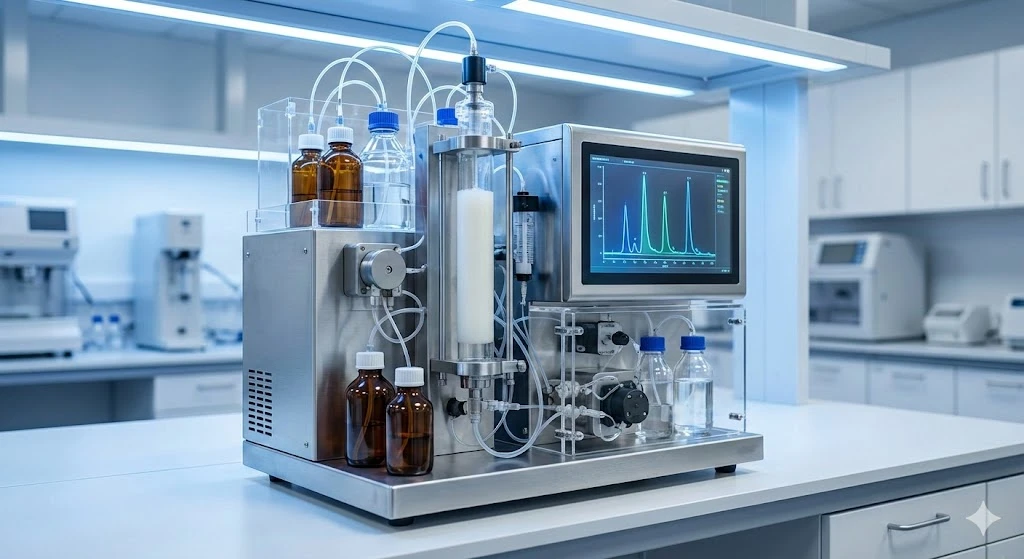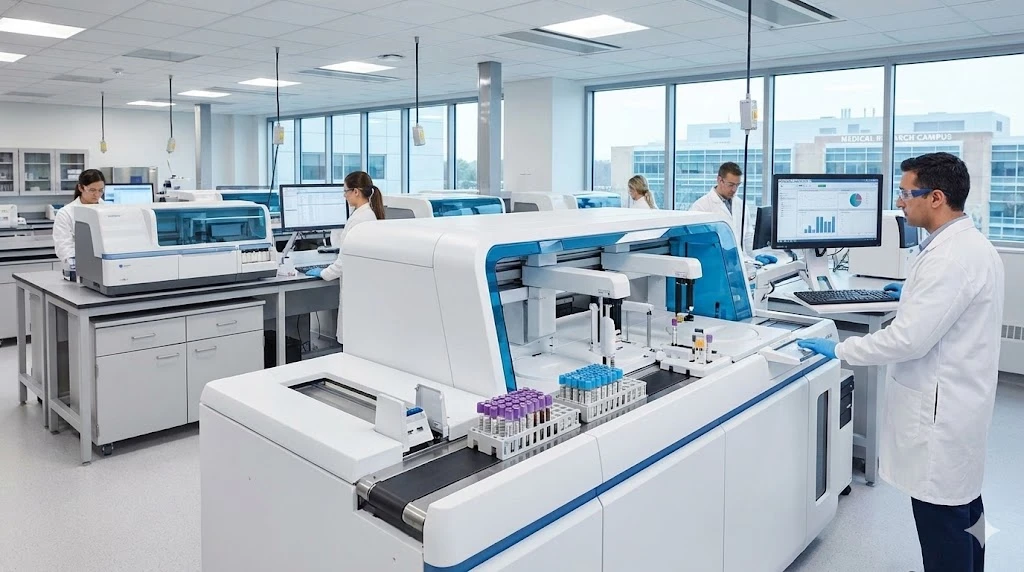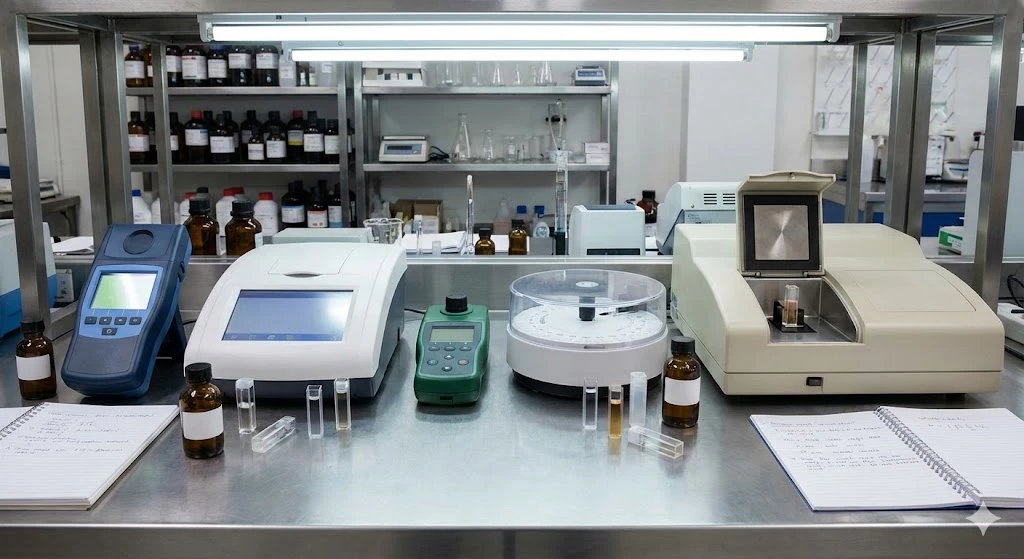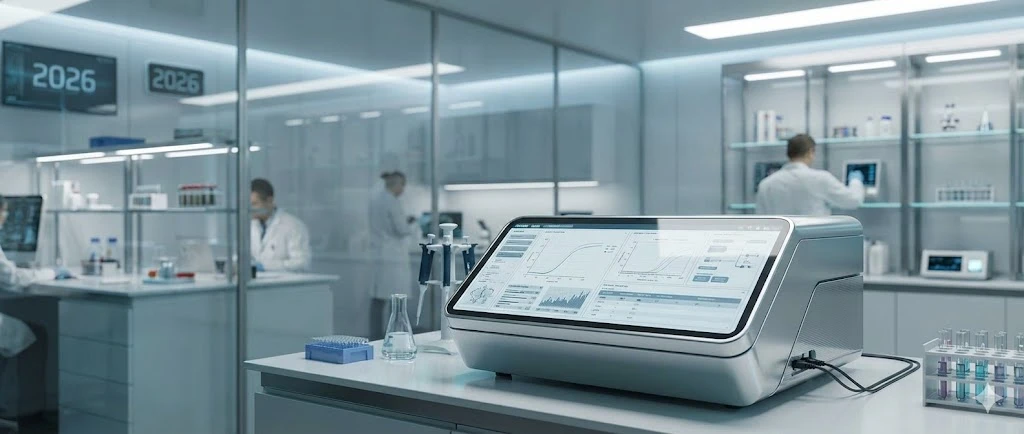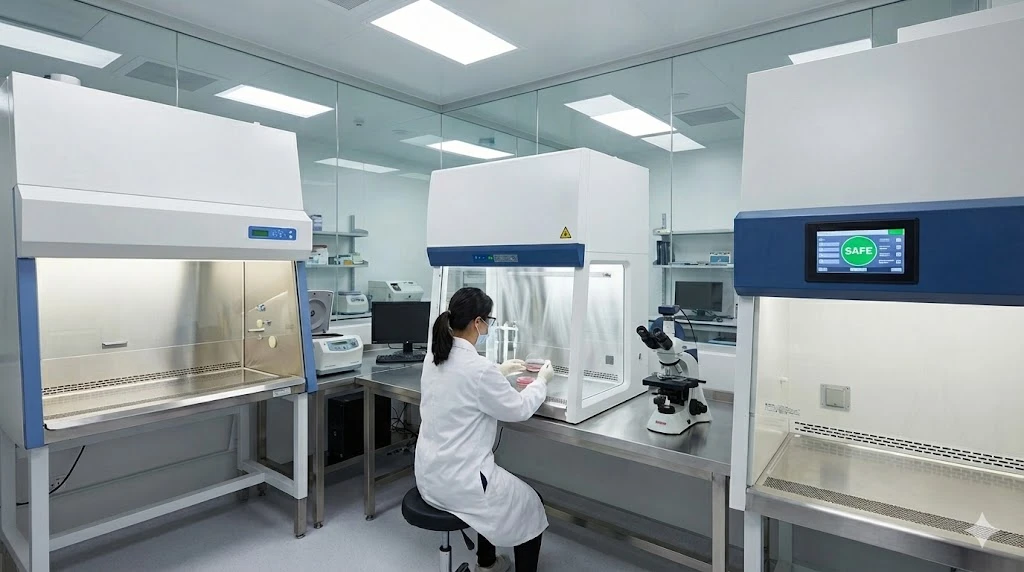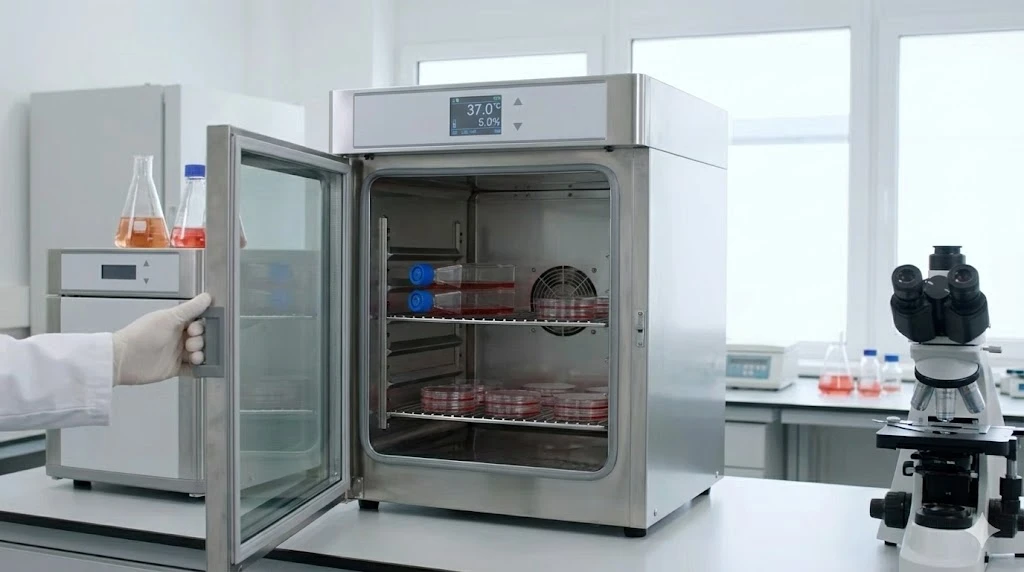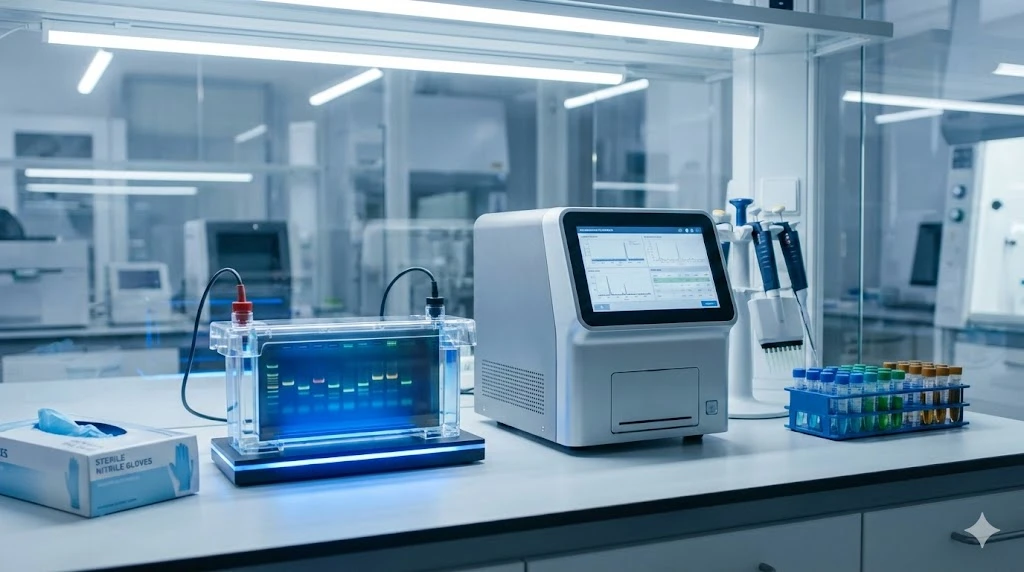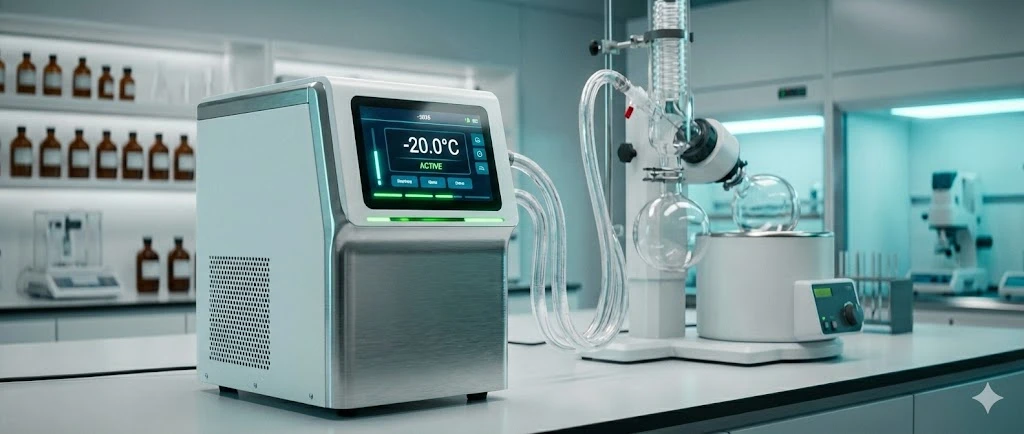Optimizing Energy Systems: Gas Analysis and Environmental Controls in Renewable Energy Labs
ImageFX (2025) In the rapidly evolving landscape of renewable energy, laboratories are the crucibles where the next generation of sustainable technologies is forged. From advanced battery chemistries and high-efficiency solar cells to novel fuel cell designs and biomass conversion processes, the pursuit of cleaner energy demands unparalleled precision in experimental design and execution. For laboratory professionals, the integrity of research hinges not only on innovative ideas but also on the meticulous control of experimental conditions and the accurate characterization of materials and processes. This article delves into two critical pillars supporting robust renewable energy research: sophisticated gas analysis and stringent environmental controls. Understanding and mastering these areas are not merely best practices; they are fundamental requirements for generating reliable data, ensuring experimental reproducibility, and ultimately, accelerating the transition to a sustainable energy future. Gas analysis is indispensable in renewable energy laboratories, providing crucial insights into reaction mechanisms, material degradation, product purity, and process efficiency. The composition and behavior of gases directly influence the performance, safety, and longevity of various renewable energy systems. Fuel Cells: Hydrogen Purity: Impurities (e.g., CO, H₂S) can poison catalysts, significantly reducing fuel cell efficiency and lifespan. Gas chromatography (GC) with thermal conductivity detectors (TCD) or mass spectrometry (MS) is vital for monitoring hydrogen feedstock purity. Reaction Byproducts: Analyzing exhaust gases (e.g., CO₂, H₂O, unreacted fuel) provides data on conversion efficiency and potential side reactions. Batteries (Lithium-ion, Solid-state, etc.): Off-gassing: During charging, discharging, or degradation, batteries can release various gases (e.g., H₂, CO, CO₂, hydrocarbons). Monitoring these gases using techniques like Fourier Transform Infrared (FTIR) spectroscopy or GC-MS helps diagnose internal issues, predict thermal runaway, and assess safety. Electrolyte Decomposition: Gaseous products indicate electrolyte breakdown, crucial for understanding battery aging and failure mechanisms. Biomass Conversion (Biogas, Biofuels): Biogas Composition: Accurate measurement of methane (CH₄), carbon dioxide (CO₂), hydrogen sulfide (H₂S), and other trace gases is essential for optimizing anaerobic digestion processes and ensuring biogas quality for energy generation. Portable gas analyzers or online GC systems are commonly used. Syngas Analysis: In gasification processes, syngas (CO, H₂, CO₂, CH₄) composition dictates its energy content and suitability for downstream applications. Photovoltaics (Solar Cells): Encapsulant Degradation: Off-gassing from encapsulating materials can indicate degradation, affecting module performance and longevity. Process Gas Monitoring: In thin-film solar cell manufacturing, precise control and analysis of process gases (e.g., silane, ammonia) are critical for material deposition and film quality. Gas Chromatography (GC): Separates components of a gas mixture based on their differential partitioning between a stationary phase and a mobile gas phase. Detectors: Thermal Conductivity Detector (TCD): Measures changes in thermal conductivity as analytes elute, suitable for bulk gases (H₂, O₂, N₂, CO₂, CH₄). Flame Ionization Detector (FID): Ionizes organic compounds in a hydrogen flame, highly sensitive to hydrocarbons. Electron Capture Detector (ECD): Detects electronegative compounds (e.g., halogens, PCBs), useful for trace contaminants. Mass Spectrometry (MS): Identifies and quantifies compounds by measuring the mass-to-charge ratio of their ionized fragments. Often coupled with GC (GC-MS) for complex mixtures, providing definitive identification. Fourier Transform Infrared (FTIR) Spectroscopy: Measures the absorption of infrared light by gas molecules. Each gas has a unique IR fingerprint, allowing for rapid, non-destructive, and often real-time identification and quantification of multiple components. Electrochemical Sensors: Compact and cost-effective, these sensors produce an electrical signal proportional to the concentration of a specific gas (e.g., O₂, CO, H₂S). Ideal for continuous monitoring and safety applications. Tunable Diode Laser Absorption Spectroscopy (TDLAS): Highly sensitive and selective technique for measuring specific gases (e.g., CH₄, H₂O, NH₃) by analyzing their unique absorption lines in the near-infrared spectrum. Offers fast response times and in-situ measurement capabilities. Beyond gas analysis, maintaining precise environmental conditions within the laboratory is paramount for the integrity and reproducibility of renewable energy experiments. Fluctuations in temperature, humidity, pressure, and particulate levels can significantly skew results, leading to erroneous conclusions and wasted resources. Temperature: Impact: Affects reaction kinetics, material properties (e.g., conductivity, bandgap), sensor performance, and electrochemical processes. Control: Climate chambers, incubators, water baths, and precise HVAC systems. Humidity: Impact: Moisture can degrade sensitive materials (e.g., perovskites, organic photovoltaics), cause short circuits in electronics, and influence electrochemical reactions. Control: Dehumidifiers, humidifiers, desiccant dry boxes, and controlled atmosphere glove boxes. Pressure: Impact: Critical for vacuum deposition processes (e.g., thin-film solar cells), gas-phase reactions, and leak detection in sealed systems (e.g., fuel cells, battery enclosures). Control: Vacuum pumps, pressure regulators, and pressure sensors. Particulate Contamination: Impact: Dust and airborne particles can contaminate sensitive surfaces, create defects in thin films, and interfere with optical measurements. Control: Cleanrooms (ISO classifications), laminar flow hoods, and HEPA/ULPA filtration systems. Atmospheric Composition: Impact: Many renewable energy materials are highly sensitive to oxygen and moisture (e.g., lithium, certain catalysts). Control: Glove boxes filled with inert gases (argon, nitrogen) with integrated gas purification systems are essential for handling air-sensitive materials and performing experiments under strictly controlled atmospheres. The true power of advanced laboratory infrastructure in renewable energy research lies in the synergistic integration of gas analysis and environmental control systems. These two domains are not isolated but rather interdependent, with each influencing the effectiveness and reliability of the other. Enhanced Reproducibility: By simultaneously controlling environmental parameters and analyzing gaseous outputs/inputs, researchers can pinpoint the exact conditions responsible for observed phenomena, leading to highly reproducible results. For example, monitoring off-gassing from a battery while precisely controlling its temperature profile provides a complete picture of its thermal stability. Real-time Process Optimization: Continuous gas analysis within a controlled environment allows for real-time adjustments to experimental parameters. In a biomass gasifier, for instance, monitoring syngas composition in real-time within a controlled temperature and pressure reactor enables immediate optimization of feedstock ratios or reaction conditions. Improved Safety: Integrated systems can provide early warnings of hazardous conditions. A sudden increase in hydrogen or carbon monoxide levels detected by a gas analyzer within a controlled chamber, coupled with temperature excursions, could trigger safety protocols, preventing accidents. Deeper Mechanistic Understanding: When environmental stressors are precisely controlled, and the resulting gaseous species are accurately identified and quantified, researchers gain a deeper understanding of degradation pathways, reaction mechanisms, and material interactions under specific conditions. This is crucial for designing more durable and efficient renewable energy devices. Automated Feedback Loops: Advanced setups can link gas analysis data directly to environmental control systems. For example, if a gas sensor detects an increase in moisture, the system could automatically activate a desiccant regeneration cycle or adjust the inert gas purge rate in a glove box. For laboratory professionals dedicated to advancing renewable energy technologies, the twin pillars of precise gas analysis and rigorous environmental control are non-negotiable. They are the silent enablers of groundbreaking discoveries, ensuring that every experiment yields accurate, reliable, and reproducible data. Investing in state-of-the-art analytical instrumentation and robust environmental control infrastructure is not merely an operational expense; it is a strategic investment in the future of sustainable energy. By mastering these critical aspects, laboratories can elevate the quality of their research, accelerate the development of next-generation energy solutions, and play a pivotal role in shaping a cleaner, more sustainable world. A1: Accurate gas analysis is crucial for battery development because it helps identify off-gassing products during charging/discharging, indicating material degradation, electrolyte decomposition, and potential safety risks like thermal runaway, leading to safer and more efficient battery designs. A2: The primary environmental factors requiring control in a renewable energy research lab include temperature, humidity, pressure, and atmospheric composition (e.g., oxygen, moisture levels), as these directly impact material stability, reaction kinetics, and experimental reproducibility. A3: Integrated systems provide enhanced reproducibility, enable real-time process optimization, improve safety by detecting hazardous conditions early, and offer deeper mechanistic understanding of material behaviors, accelerating the development of efficient and durable renewable energy solutions. A4: Common advanced analytical techniques for gas analysis in renewable energy applications include Gas Chromatography (GC) with various detectors (TCD, FID, ECD), Mass Spectrometry (MS), Fourier Transform Infrared (FTIR) Spectroscopy, and Tunable Diode Laser Absorption Spectroscopy (TDLAS).
The Critical Role of Gas Analysis in Renewable Energy Research
Applications Across Key Technologies:
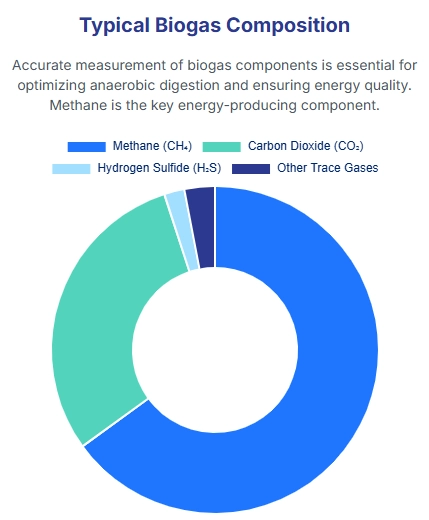
Common Techniques and Their Principles:
Precision Environmental Controls: A Foundation for Reliable Data
Key Environmental Parameters and Their Impact:
Integrating Systems: Synergies Between Gas Analysis and Environmental Control
Benefits of Integration:
The Foundation for Future Energy Breakthroughs
FAQ
Q1: Why is accurate gas analysis crucial for developing new battery technologies?
Q2: What are the primary environmental factors that must be controlled in a renewable energy research lab?
Q3: How do integrated gas analysis and environmental control systems benefit renewable energy research?
Q4: What advanced analytical techniques are commonly used for gas analysis in renewable energy applications?

